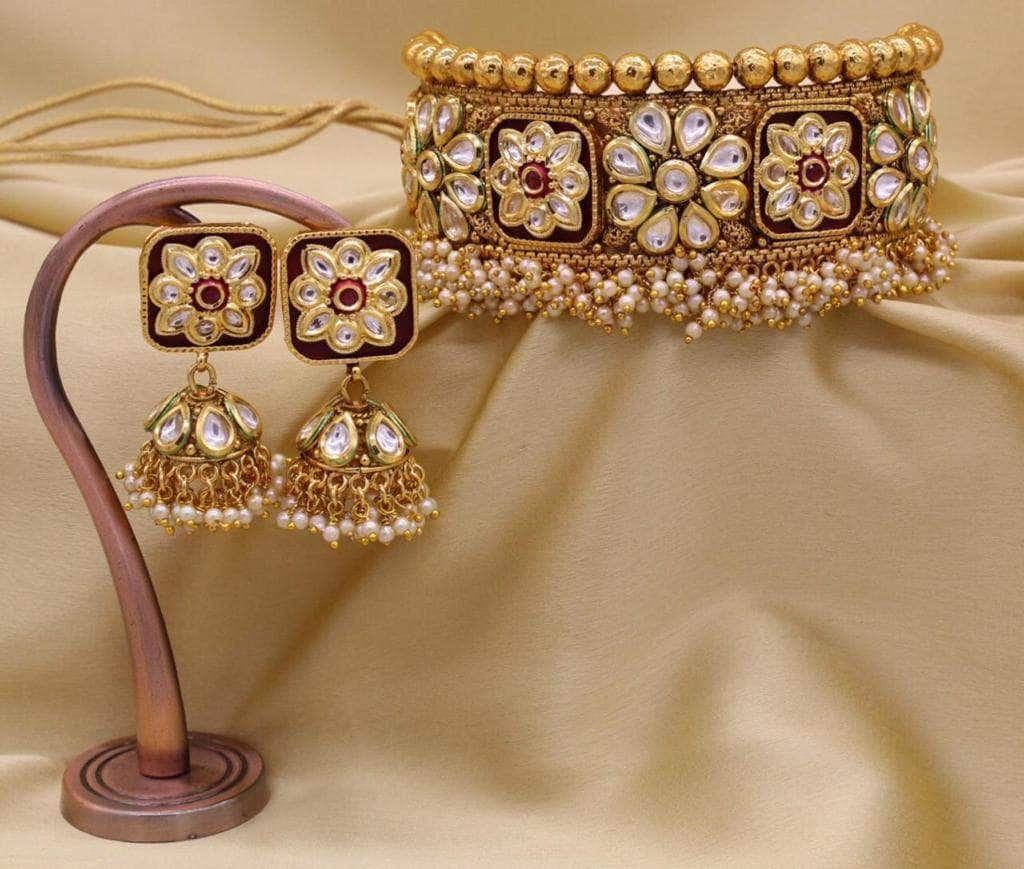The 7 Most Common Jewellery Damage Causes (and How to Prevent Them)

Your favourite jewellery would endure a lifetime in an ideal world. But if not given the right care and attention, they can easily misplaced, tarnished, or destroyed. Fortunately, by adhering to a few straightforward rules, many different sorts of harm may be prevented. In this post, we’ll look at seven of the most typical reasons why jewellery is damaged as well as solutions to prevent them.
1:Chemicals
Cleaning supplies, bleach, hairspray, and perfume are just a few of the usual home substances that may harm jewellery. These compounds have the potential to tarnish, discolour, or even induce corrosion. Remove your jewellery before using any cleaners or sprays, and wait until your lotion or perfume has dried fully before putting it back on to prevent chemical harm.
2: Humidity
Another frequent reason for jewellery damage is moisture exposure, particularly if the piece was not made to withstand extended immersion in water, as diving watches or other waterproof jewellery. Moisture can corrode, weaken the metal or the setting, and produce rust and discoloration. Before bathing, swimming, or engaging in any other activity where it could come into touch with water, be sure to take off your jewellery. In a similar vein, be careful to keep your jewellery away from windows during the cooler months since condensation-related moisture can also harm your jewellery.
#3: Heat
Many different forms of jewellery can be harmed by heat; extreme temperatures can melt or warp metal into twisted and unwearable shapes and even change the natural colours of gemstones. Keep your jewellery away from heat sources like fireplaces, stoves, sunny windowsills, and direct sunshine to prevent this sort of damage.
4:Scratches
When your jewellery comes into touch with other jewellery, items of clothing, or other surfaces, it is simple to scratch, chip, or dent it. If your jewellery is kept in a jewellery box, make sure to give it plenty of room to breathe. Also, be cautious when wearing jewellery that could potentially come into contact with other objects or surfaces, such as large rings that could bang against one another or bracelets that could accidentally bump into your desk at work while you’re typing.
5: Mishaps
Accidental collision can harm jewellery; it’s simple to shatter metal, distort jewels, or even lose pieces of jewellery. When engaging in activities like contact sports or weightlifting where jewellery may be destroyed, you should use extreme caution. Always err on the side of caution and remove your jewellery if you’re unsure of whether you or it will be secure while engaging in an activity.
6: Rubbing and Wear
If you consistently wear a few favourite pieces of jewellery, they may sustain even more wear and tear over time. This might appear as anything from weakening or stretched chains to loosening prongs that can no longer securely keep gemstones in place. Take care when putting on and taking off your jewellery to keep it in excellent condition, and stay away from wearing it while engaging in activities that might place too much strain on it.
7: Inadequate Storage
Jewellery can be damaged by poor storage. When multiple temple jewellery sets items are worn together, chains can easily tangle and metals and jewels can be harmed. Put your jewellery in a jewellery box or pouch and keep it somewhere soft, cold, and dry to prevent harm. Make an investment in a quality jewellery storage option to eliminate future anxiety about damage.
Guidelines for Care to Prevent Jewellery Damage
Now that you are aware of some of the most typical reasons why jewellery is damaged, read on for some simple advice on how to avoid damage and preserve the appearance of your jewellery:
Keep your jewellery clean.
Cleaning your jewellery on a regular basis will help get rid of oils, grime, and other elements that might accumulate and harm it over time. To keep away from any unknown substances, use a mild dish soap. To ensure there is no residual moisture, carefully dry your jewellery with a microfiber towel.
Be sure to take off your jewellery before working out.
Before working out, take off your jewellery to help avoid inadvertent injury and wear and strain. Depending on the workout you do, your jewellery may tarnish from moisture from perspiration, get caught on clothing or equipment, or just get in the way. after you’re exercising, keep your jewellery in a secure location and put it back on after you’re done.
Check your jewellery frequently.
You may spot any problems with your jewellery before they become more serious by regularly checking it. Check your jewellery for loose stones, worn prongs, or other warning signals. If you find anything that needs adjusting or repairing, take it to a competent jeweller.
Jewellery shouldn’t be worn in hostile circumstances.
It is advised to refrain from wearing jewellery to work entirely if you operate in an environment where it is subjected to strong chemicals or high temperatures. In the same way, avoid engaging in outdoor activities that might subject your jewellery to sand, seawater, or other abrasives. The greatest time to wear jewellery is when you know it will be secure (or at the very least less exposed).
Spend money on fine jewellery.
In the long term, buy high quality jewellery might pay off since it will probably last longer and be more durable. Look for jewellery with robust settings and clasps that are constructed of high-quality materials.
Prior to going to sleep, take off any jewellery.
In addition to avoiding exposure to oils and perspiration, taking off your jewellery before bed can help prevent any unintentional pulling or twisting. Additionally, it offers your jewellery a chance to relax and repair itself after a long day. Before you get into bed, put your jewellery in a secure location.




